10 Effective Tactics for B2B Marketers to Create Better Content and Convert Leads
In the world of content marketing, lead generation (or to start the process of lead generation) is the ultimate goal of a B2B marketing strategy.
That's why B2B content marketing agencies start with identifying the ideal customer profiles (ICPs) and end with getting them interested in your product.
And we get that — after all, you wouldn’t invest in a marketing strategy if it wasn’t getting you good returns. For most B2B companies, this strategy happens to be content marketing. Content is king, after all!
So, in this article, we’re telling you all the little tips, tricks, and tactics B2B marketers should keep in mind to create better content (and, ergo, convert leads).
1. Use channels your customers use
Using channels your customer use is one of the most commonly dished advice, but there’s often little information about what it means.
So, to begin with, you first need to identify which social media channels most of your customers hang out on. For example, you might find a Gen Z audience on Instagram and a boomer audience on Facebook.
However, if you have any data suggesting which social channels you get most of your website traffic from, that channel might be worth exploring. For example, Let's Talk Talent, an HR consultancy, uses WhatsApp bulk message sender tools to share educational content with its customers and generate leads on WhatsApp.
Next up, you’ll need to identify the groups they’re a part of and the influencers they follow. For example, if your customers are into finance, groups like Finance Club on LinkedIn are what you need to partake in.
And if you wish to dive in further, there’ll be niche-specific or networking groups in your city too.
Hanging out in these channels allows you to share your insights with others (thus becoming a trusted authority in your niche), but will also help you understand how your audience talks, what topics they're interested in, which influencers they trust most, and what are their biggest pain points.
2. Send them content they’d actually like
We previously discussed figuring out what topics your potential customers are interested in. The next thing up the list? Sending them content they’d actually like.
For example, your product might have multiple use cases, and because of that, you might have customers of different roles and interests.
So, you might benefit from segmenting your audience based on their interests/roles and sending them content they’d be able to derive value from.
For example, if you’re writing about how to grow as a marketer, you can share separate emails to different subgroups, and each email may contain specific examples relevant to them, such as how to grow as a content marketer vs. how to grow as a digital marketer.
If you’re wondering how to go about segmenting, one quick way to do that is to use marketing automation software to categorize your audience and send relevant messages. You can also use a composable CDP (customer data platform) to store all customer data to personalize your interactions with them.
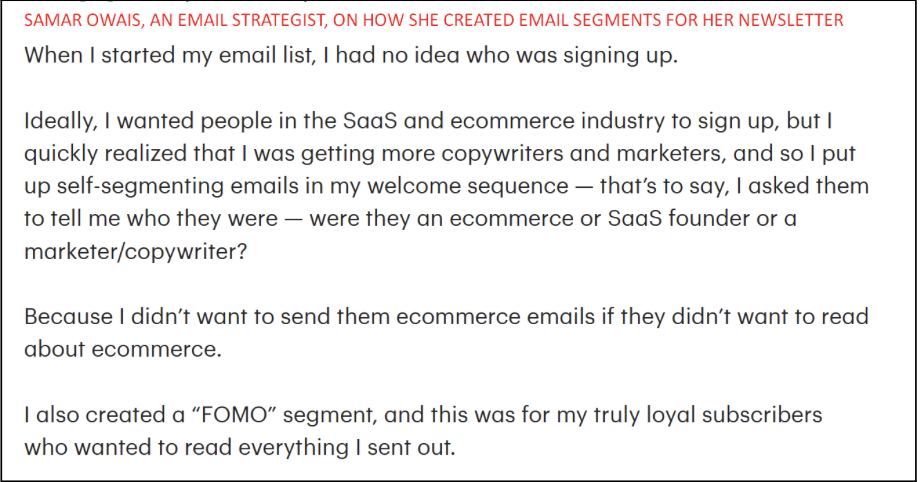
You should never underestimate the value of personalization. Treat every lead as an individual. Just like B2C marketing focuses on individual consumers, you can tailor your marketing efforts to their specific wants and needs.
Why? This strategy helps improve your sales cycle and speeds up the purchase decision. And with that being one of the largest differences between B2B and B2C, you need all the help you can get.
3. Consider banking on the goodwill of your competitors
If you’re new to an industry where almost everyone knows of the major players in the market, one of the simplest ways you can capture audience attention is by using the goodwill of these competitors.
For example, many companies out there compare their product with competitors or write listicles of product alternatives.
For reference, consider this TeamViewer alternative blog — relevant content like this is bound the capture the attention of anyone typing “TeamViewer alternatives” and looking to make a switch.
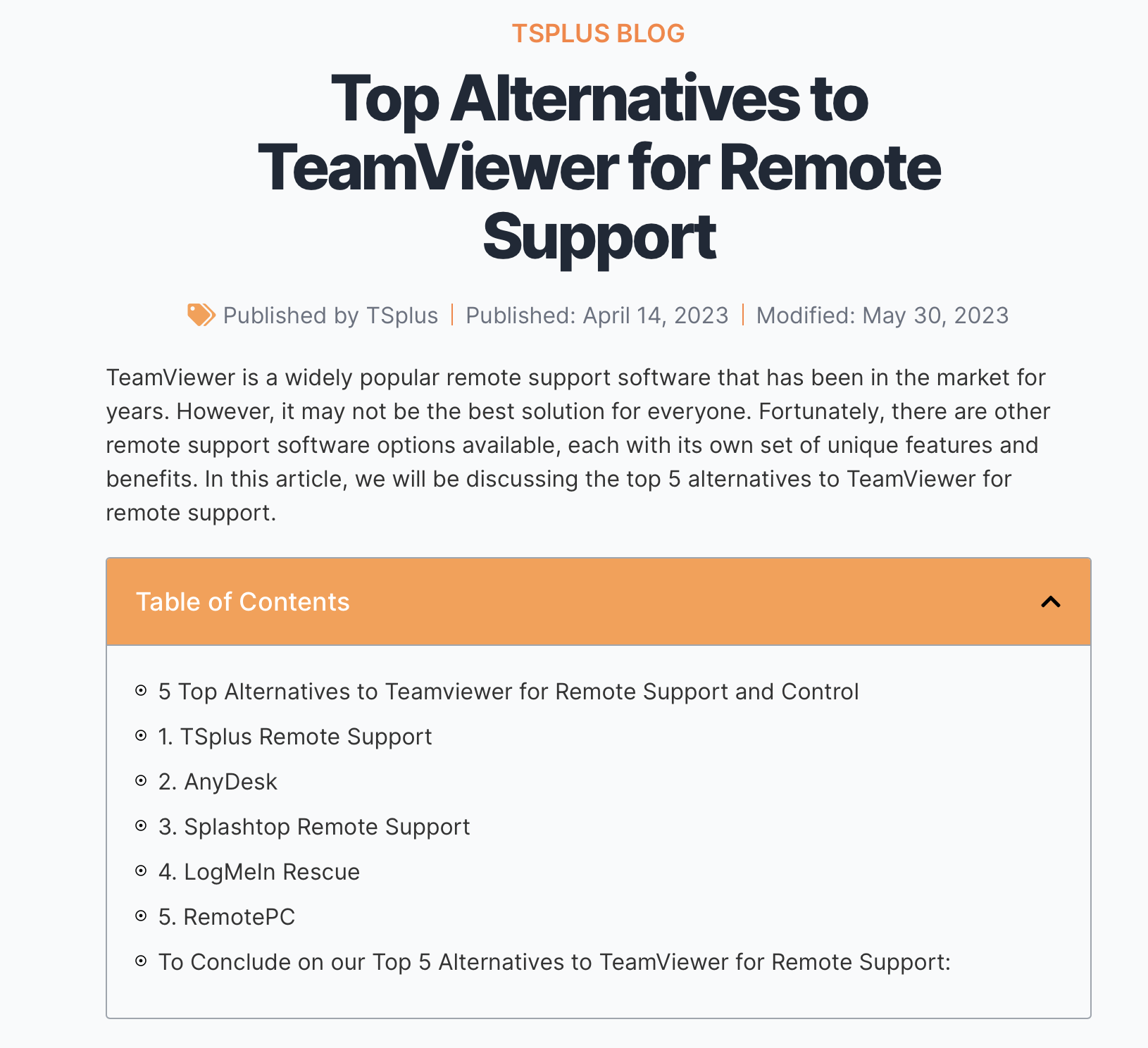
4. Keep your audience updated every step of the way
Being transparent with your customers is one of the best things you can do for your brand — this is because the more transparent you are, the more your customers will likely know the whole story (and will be able to perceive you as a brand with ethics and emotions).
For example, imagine you offer a product management software that many teams rely on to document the development of their products. And one day, it suddenly crashes. Many customers become unhappy about this and report it on Twitter.
In this scenario, you can technically walk away from this one mistake without offering any explanation.
But, if you do keep your audience updated every step of the way (and take accountability for your actions), it’ll help them understand the cause of the crash and what steps you'll take not to let it happen again.

It also paints you in an extremely positive light for these actions, so kudos for that too!
5. Don’t only focus on ranking
While search engine results page (SERP) ranking is (sometimes) treated as the be-all, end-all for content creation. You should also create content for all intents and purposes.
For example, you can create case studies to build social proof or research studies to get backlinks. Or educational content to shed more light on what your product or service brings to the table.
Regardless of your intent, the main goal of your content should be to provide value to your customers every step of the way.
And if you create content keeping this focus in mind (instead of just keyword research), you’re bound to build a community instead of just a top-ranking content library.
6. Pay attention to internal links and FAQs
With the rise of Search Generative Experience (SGE) and ChatGPT, correct interlinks and FAQs might be one of the best ways to grow your SERP rankings — especially if you want your readers to go down a rabbit hole reading your content.
While most folks focus on best practices, such as adding 3–5 internal links in a single blog post. Many marketing teams these days are suggesting against it because search engines need a hierarchy to rank, and if every blog has the same hierarchy, it can hurt your ranking.
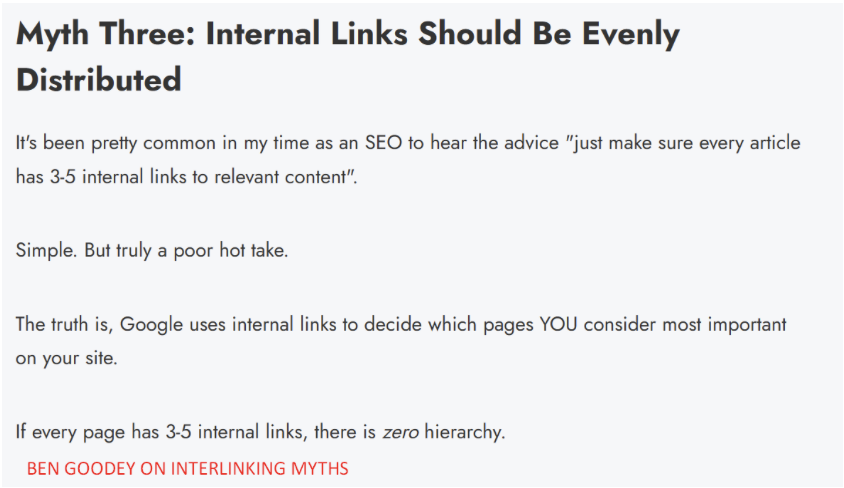
Experts also suggest interlinking based on what the anchor keyword is saying (e.g., if the anchor keyword is “best blog niches,” you can link to content that speaks about the same/similar topic).
Similarly, there’s no need to focus on content clusters or silos for interlinking either. Here’s a helpful illustration by Ahrefs which gives a little more context about this topic:

As far as FAQs are concerned, you can visit resources like Also Asked to search for ideas.
7. Don’t just create a content strategy — create an execution strategy, too
Almost every content marketer has a content strategy when they begin working on a client account. However, because many projects pan out for an extended period, with multiple deliverables and stakeholders, executing it to the T might become a tad bit difficult.
What solves this issue? Create an execution plan, too, along with a content strategy. For example, if you figure out which content to write for, which type of audience, you can provide your writers with:
- Ideal Customer Profiles (what are their risks and challenges, what value proposition to focus on, what tech stack they currently have, why would they want to make a switch, etc.)
- Content briefs
- Examples of content pieces you liked and why
- Reason for writing this content and it fits into your content and SEO strategy
- In-house company resources like product demos, case studies, and helpful stats
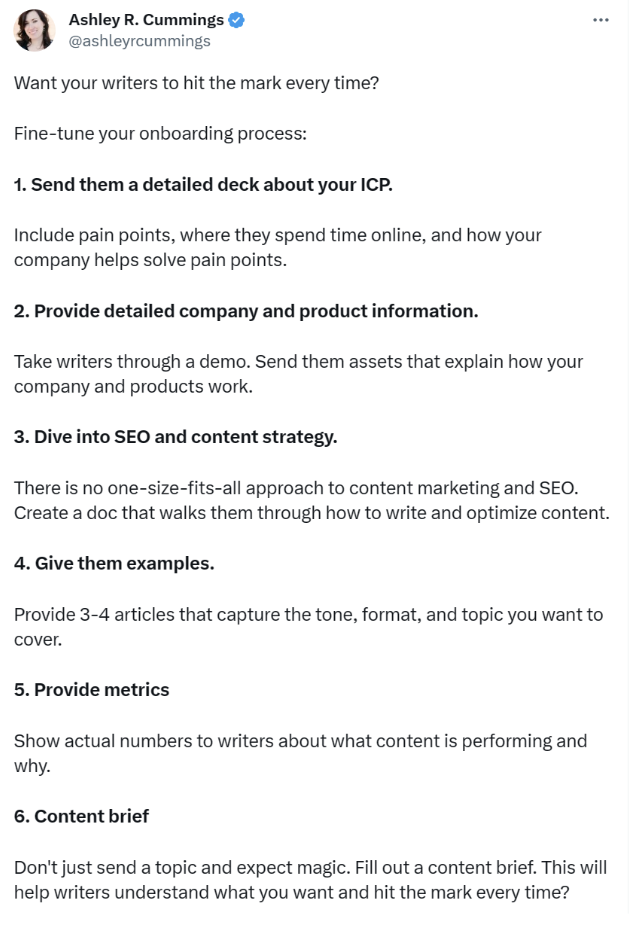
Something similar can be done for each and every stakeholder you work with, too. And then somewhere down the line, you can A/B test individual content pieces to see what works and what doesn't, and then rectify your execution strategy from thereon.
8. Optimize your lead capture forms
The difference between an audience and a prospect can be found in a lead capture form, so it makes sense to spend time and energy perfecting these forms to convert the most amount of readers into leads.
Here are some of the best practices for optimizing lead capture forms you can focus on:
- Make your forms shorter (only ask for information that’s needed)
- Try to write CTAs that communicate your offer (e.g., instead of writing “Click here to book a demo,” you can write “Book a demo to learn cost-effective ways of marketing”)
- Make your forms accessible on all devices
- Use a simple design (add interesting graphics, too, if you can)
- A/B test and use analytics to see what works and what doesn’t
9. Offer free resources
We all love freebies, and many companies use our love for freebies to get us hooked on their products (remember all the freemium plans and 30-day free subscriptions you signed up for?)
Well, if your sales team doesn’t already offer a freemium model or a free subscription, you can instead create freebies, such as e-books or research available for free, that’ll help your readers gain value from your business and improve their satisfaction.
Doing so consistently will eventually help them think of you as a trusted authority in your niche.
And if you’re looking for inspiration, take uSERP as a prime example. This SEO agency offers a free webinar about how to scale link building. And it’s as simple as filling out a form with your name and email address.
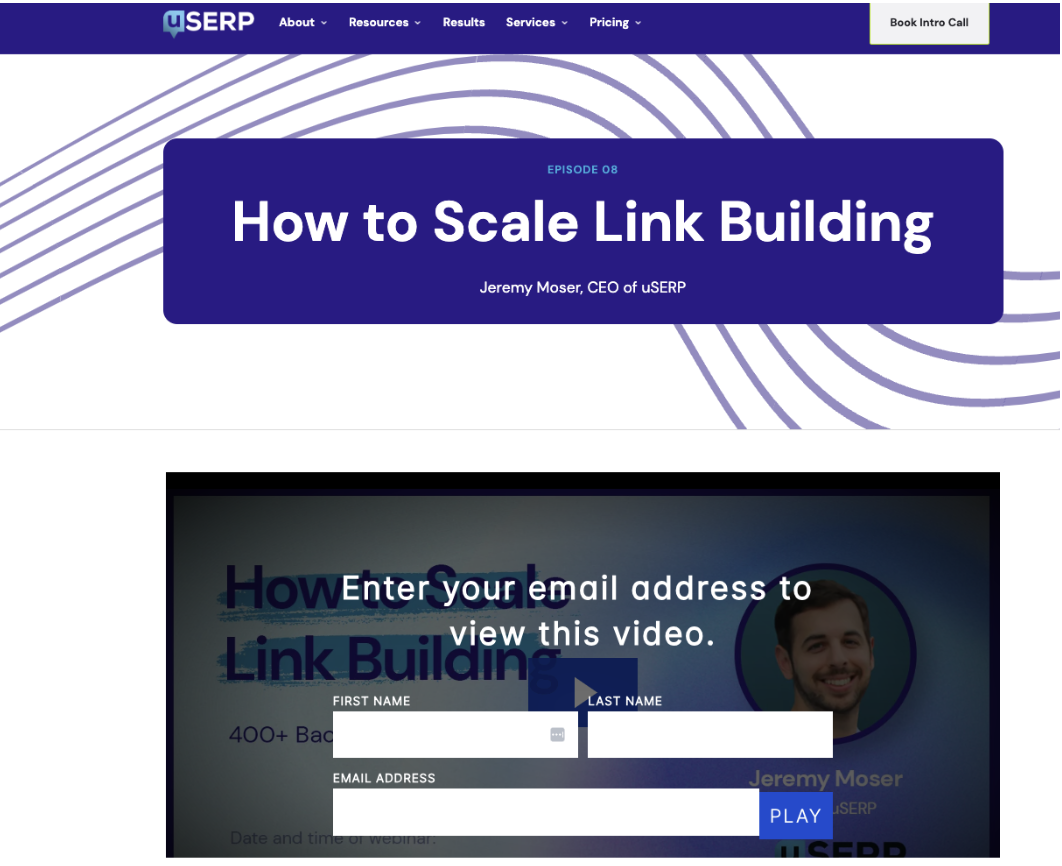
Why does this work? You unlock access to a treasure trove of free information from a trusted player in the game. And uSERP builds a robust email list of potential buyers, who now enter their drip email marketing campaign. It’s a win-win.
10. Prioritize account-based marketing
Bargains, deals, and discounts may work wonders in the B2C space, but when it comes to B2B marketing, the rules of the game shift a little. The secret sauce? Account-Based Marketing (ABM).
Think of it this way: What if you could tailor your marketing efforts to each key account instead of trying on the one-size-fits-all marketing approach?
That's the magic of ABM, and many successful B2B businesses swear by it.
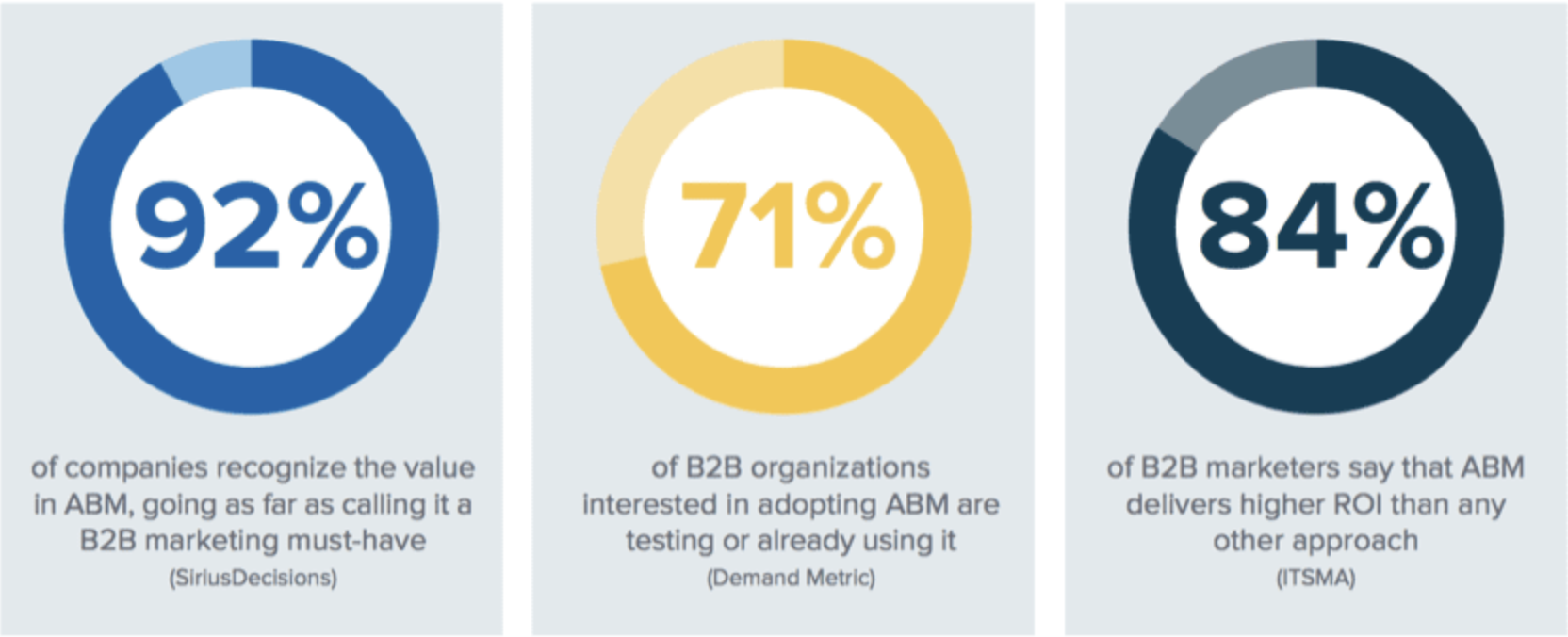
This approach works wonders because, instead of chasing leads randomly, you focus on prospective clients that are the most likely to convert. It's the digital equivalent of courting each high-potential prospect personally, and who doesn't like a bit of attention?
So, how can you pull this off? By offering targeted campaigns to individual key accounts. It's as simple as choosing your target audience and designing a personalized campaign for them.
And why does this tactic perform so well? Firstly, by engaging high-potential leads with personalized campaigns, you create a deeper connection.
Secondly, you’re not just making one sale. You're forging relationships with businesses that could potentially lead to long-term contracts and collaborations. And ultimately, isn't that the goal of B2B marketing? It's a win-win indeed.
Convert more prospects with the LeadGen App
There are many B2B marketing tactics on this in-depth list we might not be able to help you out with. For example, creating free resources and telling you which specific channels to visit to target your customers.
But there’s still one thing we may be able to help you out with, and that’s creating lead capture forms.
With LeadGen App, we strive to help B2B businesses create personalized forms for your needs without the need to code anything. And we’ve got a bunch of templates to help you get started too.
Sign up for a free 14-day trial to learn more about the kinds of forms you can create with the LeadGen App.







